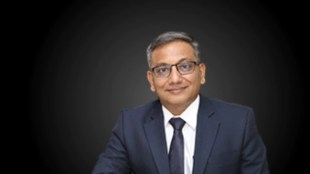With the Aam Aadmi Party showering freebies in just the few days it has been in office, the UPA looking like it is going to raise the cap on subsidised LPG cylinders once again, from 9 to 12 a year?and even possibly relooking this week?s R220 per cylinder hike in prices of non-subsidised cylinders?and Prime Minister Manmohan Singh announcing his retirement from politics, it is fair to say election season is upon us. Dr Singh, it is well known, has been a reluctant reformer as the Prime Minister and a pale shadow of his former self. As Narasimha Rao?s finance minister, he unshackled India and, it is no exaggeration to say, he let a million dreams flower. Whether this was done by realigning the rupee to give a boost to exports, or fixing tax distortions or delicensing industry or liberalising capital markets, Dr Singh did it all with panache.
As Prime Minister, though the arrangement with party chief Sonia Gandhi was meant to insulate him from the daily grind of politics, this never really happened. If it wasn?t the Left parties that were hamstringing him, it was Gandhi?s social agenda with Jairam Ramesh, and later Jayanthi Natarajan, playing a useful foil in the environment ministry, protecting the rights of forest dwellers and others against what the NAC-crowd generally viewed as industrial marauders.
Needless to say, the last decade of the UPA did see significant reforms, whether on allowing FDI in retail, opening up the aviation sector or pushing PPP as a legitimate form of investment activity. The problem, however, was that these weren?t pursued with the same vigour as the NAC-favourites, be they the Right to Information Act, the Right to Education Act, the Food Security Act, the Mahatma Gandhi National Rural Employment Guarantee Act. If one number sums up the government?s overall direction, and pace, it was expenditure on subsidies. While around 2% of India?s GDP was spent in this fashion in the pre-1991 era, Dr Singh?s biggest contribution?through cutting subsidies and by expanding GDP?was to reduce this to around half by the time he was done at the finance ministry. The NDA, to its credit, by and large stuck to the script in the early years, but let it rise to around 1.5% towards the end. The UPA, since it believed it had come on an anti-India Shining wave, raised this dramatically, to over 2% by the time it demitted office the first time?mind you, this was on a dramatically increased GDP. The proportion has risen since and if this year?s numbers look a bit better, this will be because of deferred expenditures of over 1% of GDP along with passing on a substantial share of oil subsidies to PSUs.




With Singh announcing his retirement and the Congress gearing up for elections, the question is what its strategy should be?more subsidies or carrying on with as much of the reforms agenda as possible? The good news is that it is unlikely there will be a big splurge in expenditure?the threat of the credit-rating agencies downgrading India to junk status ensures that. Only subsidies, like in the oil sector, that can be passed on to oil PSUs, can possibly be raised. Promises, like the ones made in the Food Security Act, can be made, but not more than that, especially if the model code of conduct is just a few months away.
The other point worth keeping in mind, if the recent assembly elections are anything to go by, is that voters have roundly rejected just freebies (Rajasthan) unless they are accompanied by robust growth (Chhattisgarh). The UPA does have another shot at redeeming itself, and some of the moves made by it in the last one year?Tesco has come in, HUL and GSK are investing big, RIL and Cairn are investing $9 billion more?are beginning to pay off. The question is whether it wants to go for a growth strategy that may deliver, or stick to a freebies strategy that has paid it no dividends but looks safe. If reformers want to convince Sonia Gandhi, they would do well to point out that the R450-500 that the Food Security Act promises per family per month equals just 1-2 days wages were economic growth to take off.















